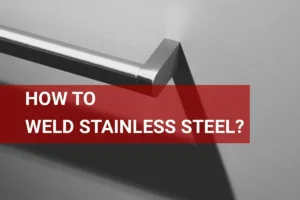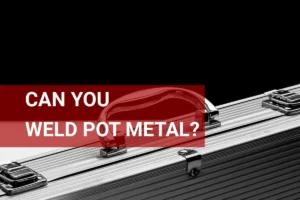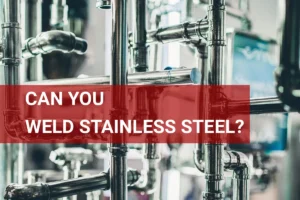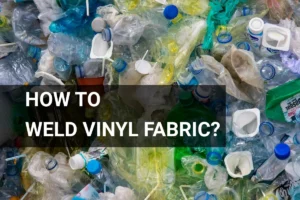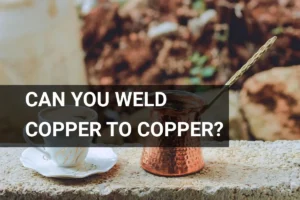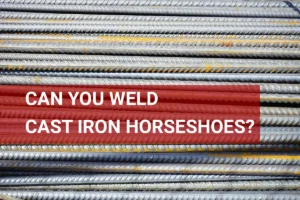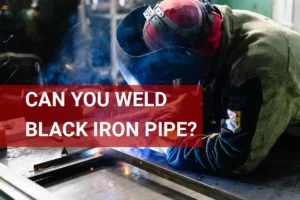How to Fix a Broken Weld Without Welding? Tips, Steps, and Adhesives
Published on: June 7, 2025 | Last modified: March 4, 2025
By: Joe Carter
A broken weld refers to a connection in metal that has failed, often resulting in a weak joint. This could happen due to poor technique, wear and tear, or excessive heat.
So, if you are wondering how to fix a broken weld without welding, you’re not alone! Understanding how to address this issue is essential. I’ve seen parts fail multiple times because quick fixes weren’t applied, leading to bigger problems and costlier fixes.
In this guide, you’ll find information on what a broken weld is, types of broken welds, important prerequisites for repair, steps on fixing broken welds without welding, and precautions. You’ll also learn about different adhesives for repair, factors to consider, potential issues with broken welds, aftercare tips, and when you might need another method. This is your complete roadmap to address how to fix a weld without welding challenges!
Contents
- How to Fix A Broken Weld Without Welding?
- What is a Broken Weld?
- Types Of Broken Welds
- Prerequisites to Keep in Mind
- Steps to Fix a Broken Weld Without Welding
- Precautions
- Types Of Adhesives for Repairing Welds
- Factors to Consider for Repairing Welds
- What Could Go Wrong: Unique Issues With Broken Welds
- Understanding the Limitations of Non-Welded Repairs
- Benefits Of Fixing a Broken Weld Without Welding
- Use Cases Of Weld Repair Without Welding
- When to Try a Different Approach
- Frequently Asked Questions (FAQs)
- Conclusion
- References
How to Fix A Broken Weld Without Welding?
A broken weld is a failure in a metal joint. To fix a broken weld without welding, use epoxy or a cold metal stitch. These methods are usually easy, but be cautious; they may not support heavy loads. For those ready to explore welding thin materials, understanding how to weld 16 gauge sheet metal offers a comprehensive approach to creating strong joints.
What is a Broken Weld?
A broken weld refers to a failure in a welded joint. It can occur due to poor penetration or overloading. Statistics show about 30% of welds experience issues over time. Common failures include cracking or complete detachment, influenced by the materials used and the welding method.
Fixing a broken weld without welding can be practical. I’ve used high-strength epoxy to rejoin metals effectively. These methods can provide additional strength compared to a typical weld, especially in non-structural applications.
I’ve seen people get a lot of use out of it for various repairs. For example, a friend used epoxy to fix a broken sway bar after learning how to repair a broken weld without welding. This not only saved money but also extended the life of his vehicle parts, confirming that you can achieve reliable joins without traditional welding techniques.
Types Of Broken Welds
What are the types of broken welds, and how can you repair them without welding?
-
Hot Cracks
Hot cracks occur when metal cools too quickly. To fix these, use a strong adhesive like JB Weld. Clean the crack, apply the adhesive, and let it cure for at least 24 hours for a solid repair.
-
Cold Cracks
Cold cracks form after the weld cools, often due to stress. Use epoxy glue to secure it. Mix the epoxy, apply it generously into the crack, and let it set completely, usually in about 6 hours.
-
Fatigue Cracks
Fatigue cracks appear from repeated stress on the weld. A flexible adhesive can help. Clean the area, embed the adhesive into the crack, and let it cure for 24 hours for best results.
-
Corrosion Cracks
Corrosion cracks develop from moisture exposure. Use a sealant to fix these. Remove any rust, apply the sealant over the crack, and let it cure, which usually takes about 12 hours.
-
Underbead Cracks
Underbead cracks occur beneath the weld’s surface. Use a bushing compound for repair. Clean the area, apply the compound, and allow it to harden. This typically takes around 24 hours for a full set.
You should now have a good understanding of various broken weld types. In the next part, we’ll discuss essential considerations to remember.
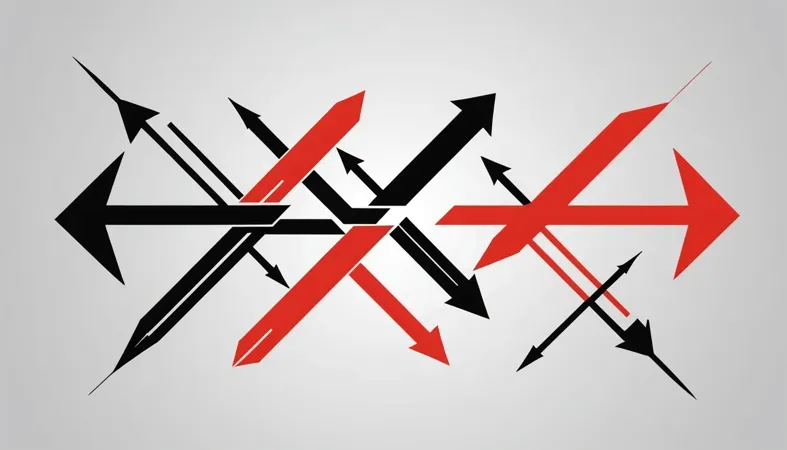
Prerequisites to Keep in Mind
What do you need to fix a broken weld without welding?
- Epoxy Adhesive: Have JB Weld or Loctite Epoxy on hand. It’s essential for bonding two metal surfaces.
- Cleaners: Use acetone or denatured alcohol to clean the metal. These ensure the surface is free of contaminants for a strong bond.
- Clamps: Get strong clamps, like Irwin Quick-Grip, to hold the metal tightly while the adhesive cures. This maintains alignment and strength.
- Sandpaper: You need various grits, like 80 and 220, for surface preparation. Roughing up the metal gives the adhesive a better grip.
We covered essential prerequisites to consider when addressing weld issues. Next, we will explore steps to repair a broken weld.
Steps to Fix a Broken Weld Without Welding
We’ll cover steps to repair a broken weld without traditional welding techniques. Follow these steps carefully for the best results.
-
Assess the Damage
Examine the broken weld closely. Check for gaps or misalignments in the metal pieces. Ensure the break has a clean, visible gap; dirt or rust can cause issues later. If the joint has significant damage, consider replacements instead of an adhesive fix.
Understand the context of your broken weld. Are you dealing with high-stress components like a sway bar? That requires a stronger solution than a simple repair on a metal chair.
-
Clean the Area
Remove all dirt, rust, and grease from the broken weld site. Use a wire brush to reach tight spots, as contaminants can weaken adhesion. After cleaning, wipe the area with a damp cloth, ensuring it’s dry afterward. Following this step prevents future failures due to weak bonding.
Use chemicals like acetone to ensure the surface is thoroughly clean. Trust me, skipping this can lead to frustrating retries later!
-
Apply a Suitable Adhesive
Choose a high-quality epoxy or specialized metal adhesive like JB Weld. These products cure to create a bond stronger than the metal itself; some can withstand over 6.9 MPa (1,000 Psi) pressure! Mix the adhesive according to the package instructions for optimal results. When joining materials, it’s crucial to understand whether you can weld zinc plated steel to ensure the best approach.
Apply the adhesive generously into the gap and over the joint surface for full coverage. Wait about 5 minutes before manipulating the joint; this reduces the risk of slipping during adhesion. Avoid haste here; patience pays off.
-
Reinforce the Joint
Add extra support as needed for high-stress areas. For instance, use metal brackets or pieces cut from scrap metal. Secure these with more adhesive or screws if possible; this adds additional strength.
Consider reinforcing specific shapes based on the type of weld. For example, joining flat pieces differs from cylindrical ones. Proper anchoring can prevent future breaks in varying conditions.
-
Allow Proper Curing Time
Don’t rush the curing phase. Each adhesive has a recommended curing time; typically 24 to 48 hours. Avoid putting the joint under stress until fully cured to ensure the strongest hold. This waiting time is crucial, especially for heavy or load-bearing repairs.
Remember, patience offers strength. When I once fixed a sway bar and tried to use it immediately, it broke again! Ensure you allow enough time for the bond to solidify fully before any practical use.
So far we covered steps to repair a broken weld without welding. Next, let’s look at safety measures to take.
Precautions
Let’s explore essential precautions for fixing a broken weld.
- Protective Gear: Always wear gloves and safety goggles to prevent injuries. I recommend using coveralls and welding gloves.
- Ventilation: Work in a well-ventilated area to avoid inhaling fumes. Aim for at least 6–8 air changes per hour.
- Surface Prep: Clean the surface thoroughly before application. Wax or grease can affect bonding—I’ve had great results with acetone!
- Temperature Control: Maintain proper temperatures while applying repair materials. Use heat guns to manage residual heat.
It’s vital to follow these precautions—you want to be safe while repairing!
We have now covered precautions for repairing welds. Next, we will examine the various types of adhesives for repair.
Types Of Adhesives for Repairing Welds
Now, let’s discuss the different types of adhesives: Epoxy Adhesives, Metal Fillers, Polyurethane Adhesives, Acrylic Adhesives, and Silicone Adhesives.
-
Epoxy Adhesives
Epoxy adhesives consist of two parts: resin and hardener. Mix them together to create a strong bond that withstands pressures up to 3,000 psi (Pounds Per Square Inch). They’re excellent for repairing faulty welds and efficiently filling gaps.
-
Metal Fillers
Metal fillers come as pastes or rods, often made of aluminum or steel. Apply them directly to the damaged area for bonding. From my experience, they’re ideal for fixing broken welds without welding. They typically tolerate temperatures up to 204°C (400°F) and set quickly, simplifying repairs. To enhance your skills, familiarize yourself with the techniques on how to heliarc weld.
-
Polyurethane Adhesives
Polyurethane adhesives provide flexibility and strength. They expand as they cure, effectively filling gaps. These adhesives can absorb impacts and are waterproof, making them suitable for various environments.
-
Acrylic Adhesives
Acrylic adhesives cure quickly and bond strongly to metals. They’re less sensitive to surface cleanliness than other options. You can bond areas at room temperature and achieve full strength in as little as 30 minutes.
-
Silicone Adhesives
Silicone adhesives offer flexibility and high-temperature resistance. While they aren’t suited for heavy loads, they perform well for smaller repairs. They excel in high-moisture environments, making them versatile for various applications.
Factors to Consider for Repairing Welds
What factors affect fixing a broken weld without welding? Understanding these can save the day.
-
Type Of Material
Different materials react differently to repairs. For example, aluminum needs a stronger adhesive due to its lower melting point of about 660°C (1220°F).
-
Temperature Sensitivity
Materials sensitive to heat may change properties during repair. For instance, thermoplastics can deform at temperatures as low as 100°C (212°F), impacting repair integrity.
-
Environmental Conditions
Humidity, temperature, and exposure to elements play significant roles. In high humidity, adhesives can take longer to cure—think weeks instead of days!
-
Load-bearing Requirements
The stress a repair faces is crucial. Adhesives can handle different strengths; some support loads up to 5000 psi (Pounds Per Square Inch), while others fail under lighter weights.
-
Curing Time
Each adhesive has different curing periods. Fast-setting glue might harden in just 30 minutes, while others can take 24 hours or more.
What Could Go Wrong: Unique Issues With Broken Welds
Let’s look at specific problems you might face with a broken weld.
-
Inadequate Penetration
A broken weld often occurs due to inadequate penetration. Inspect the weld bead; if it’s shallow, grind it down and reweld using the correct technique.
-
Thermal Stress
A broken weld from thermal stress can crack under heat cycles. Look for hairline fractures. To fix it, relieve stress with proper cooling methods.
-
Improper Joint Fit-up
If the joint fit-up isn’t right, you’ll end up with a broken weld. Check your joint alignment. To resolve this, realign and ensure proper spacing before welding.
-
Shielding Gas Issues
If shielding gas is absent or poorly applied, the weld can break, leading to visible porosity. Ensure the flow rate is set correctly, averaging around 10-20 cubic feet per hour (Cfh).
Understanding the Limitations of Non-Welded Repairs
Knowing the limits of your repair methods is crucial. Here are some downsides you should consider:
| Repair Method | Advantages | Limitations |
|---|---|---|
| Epoxy Adhesive | Easy application, good for non-structural repairs, cures strong and fast. | May not withstand high temperatures, adhesive failure under heavy loads. |
| Mechanical Fasteners | Strong connection without heat, easy disassembly. | Requires additional components, potential for corrosion at joints. |
| Metal Fillers | Allows for gap filling, simple application. | Not as strong as welding, can crack under stress over time. |
| Cold Metal Stitch | Works well on thin materials, no heat distortion. | Not suitable for high-stress joints, time-consuming to apply effectively. |
Consider these limitations when choosing your repair method. Sometimes, your best bet may still be traditional welding, especially for critical loads!
Benefits Of Fixing a Broken Weld Without Welding
Fixing a broken weld without welding is often faster and cheaper. Many people effectively repair metal structures without the hassle of setting up a welding station.
Additionally, you can avoid heat distortion, save on materials, minimize cleanup, and often achieve a strong bond. Using methods like adhesives or mechanical fasteners is an excellent alternative to welding. When considering various fabrication techniques, it’s crucial to understand how to remove welds.
Use Cases Of Weld Repair Without Welding
I’ve known people to use adhesives for broken welds. They have many applications, such as:
- Automotive Frame Repair: Use high-strength epoxy or metal bonding adhesives. It’s ideal for vehicles that can’t undergo traditional welding. This method is popular for vehicle repairs due to its speed and ease of application.
- Piping Systems: Apply pipe clamps or flanges to seal a broken weld. This approach saves time and prevents leaks in critical systems. Many industries prefer this method because it minimizes disruption.
- Outdoor Furniture Restoration: Use commercial-grade glue to fix damaged welds. It’s perfect for metal chairs or tables and is widely used because it’s weather-resistant and quick to apply.
- Marine Structures: Use underwater adhesive compounds to repair broken welds. This is especially important in boating for maintaining structural integrity without dry docking. It’s popular in boat maintenance due to its effectiveness and ease of use.
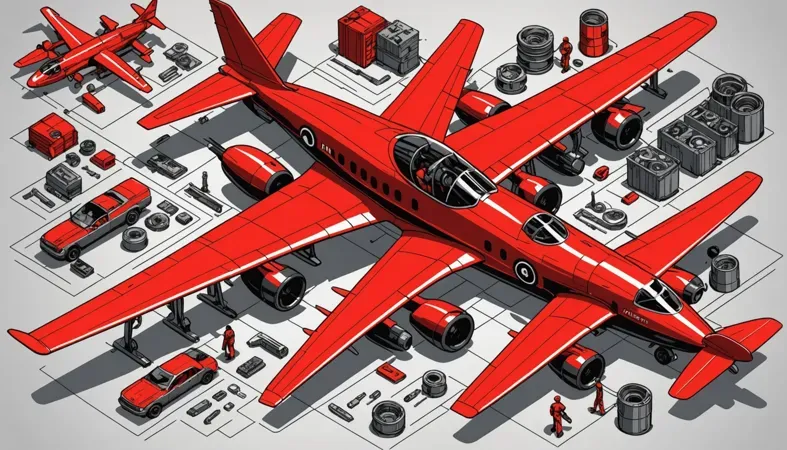
When to Try a Different Approach
You might want to explore other methods if your broken weld isn’t conducive to welding. Adhesives like JB Weld or epoxy welding glue work wonders for certain applications. In my experience, they’ve held metal parts together exceptionally well when traditional welding isn’t an option.
. If you’re fixing a metal chair or a sway bar, these glues can be more accessible and quicker. Plus, you can join metal securely at home without any heavy gear. Just make sure surfaces are clean for the best bond!
Frequently Asked Questions (FAQs)
Now let us look at some common questions I typically get asked.
What Glue Can Replace Welding?
Yes, certain adhesives can replace welding. High-strength epoxy and structural adhesives can bond metal effectively. For example, some epoxies reach strengths of 3,000 psi (Pounds Per Square Inch), providing a strong hold, different from traditional welding techniques.
How Do You Join Two Pieces Of Metal Without Welding?
You can join two pieces of metal without welding using methods like riveting or using mechanical fasteners. Riveting creates a permanent bond and transfers loads evenly across the joint, while mechanical fasteners offer flexibility and ease of disassembly.
However, when precision and strength are required, welding sheet metal becomes essential.
Is There an Alternative to Welding?
Yes, several alternatives exist to welding, including brazing and soldering. Brazing operates at temperatures over 450°C (about 840°F) and is effective for joining dissimilar metals, while soldering typically involves lower temperatures and is great for electronics. Understanding the various methods, such as welding by metals, can help determine the best approach for your project.
When setting up a workspace for these tasks the dimensions of the welding table are crucial for efficient workflow, which is detailed on how high a welding table should be.
Is Metal Glue As Strong As Welding?
No, metal glue isn’t usually as strong as welding. However, some high-performance adhesives can achieve impressive bond strengths, varying from 1,000 to over 2,000 psi, which makes them effective for specific applications but not a direct replacement for all welds. When dealing with specialized components, understanding how to weld thermocouple wire can be crucial for ensuring durable connections in critical environments.
Can You Weld Over a Bad Weld?
Yes, you can weld over a bad weld, but you must prepare the surface. This prep includes grinding or cleaning the old weld to ensure proper fusion and strength. If poorly prepped, your new weld might just repeat past mistakes and fail.
Conclusion
We covered what a broken weld is, types of broken welds, prerequisites, steps to fix a weld without welding, and precautions. We also looked at types of adhesives, factors to consider, potential issues, aftercare, and the benefits of these methods, as well as use cases and when to try a different approach. Lastly, we answered frequently asked questions about the topic.
To fix a broken weld without welding, try using a strong adhesive like epoxy or a structural adhesive. Follow steps like cleaning the area, applying the adhesive, and allowing it to cure fully, usually around 24 hours for maximum strength. This method gives you a solid alternative to welding, especially when you consider materials like steel or aluminum—both of which often respond well to adhesive solutions.
For more detailed insights and the latest technical expertise on welding techniques, visit What is Welding.
References
- American Society of Mechanical Engineers. (2019). ASME Section IX: Welding and Brazing Qualifications. New York, NY: ASME.
- Kou, S. (2003). Welding Metallurgy (2nd ed.). Hoboken, NJ: Wiley.
Joe Carter is a retired welding professional with over 40 years of hands-on experience in the industry, spanning ship repair, structural welding, and even underwater projects. Joe is a master of MIG, TIG, and Stick welding. Passionate about mentoring the next generation of welders, Joe now shares his decades of expertise and practical insights to help others build rewarding careers in welding.
Adhesives, Broken Welds, DIY, Metal Repair, Repair Techniques, Welding
